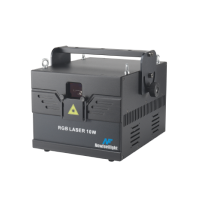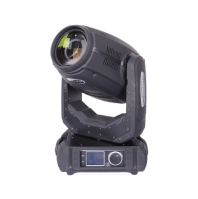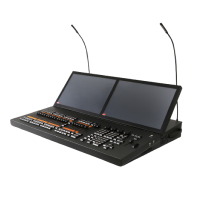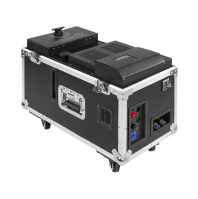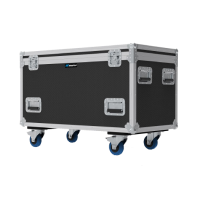Table of Contents
- 1. Laser Light Control Software: Precision and Flexibility Combined
- 2. Sound-Activated Mode: Perfect Sync with Musical Beats
- 3. Auto Mode: Simple and Convenient Automatic Light Effects
- 4. SD Card Mode: Ideal for Advertisements and Offline Playback
- 5. DMX Control: Standardized Stage Lighting Integration
- Important Considerations for Using Stage Laser Lights
- Application Scenarios and Effects of Stage Laser Lights
Stage
laser lights are a crucial element in modern stage performances and entertainment events, offering a unique visual impact. With various control modes, they can create a wide range of visual effects to meet the demands of different occasions. This article provides an in-depth introduction to several common
stage laser light control modes, along with practical application cases.
1. Laser Light Control Software: Precision and Flexibility Combined
Laser light control software is currently the most advanced control method. Through specialized software installed on a computer, users can precisely control the color, mirror scanning, and animation effects of the
laser lights in real time. The software allows users to edit text, graphics, and even generate complex animation beam effects on the fly.
Application Case: Laser Show at an International Music Festival
At a renowned international music festival, a complex
laser light show was set up using multiple high-end laser lights, all controlled by software in real-time. As the music played, beams of laser lights danced across the sky, creating dynamic and vibrant animations synchronized with the musical beats. The software precisely controlled every detail, and the beams and color changes matched the music’s climax perfectly, delivering an immersive audiovisual experience for the audience.
Requirements:
A dedicated laser light control software is needed.
The laser lights must have an ILDA interface to receive signals from the computer.
A DA conversion interface, which usually comes with the software, is required to bridge the computer and the laser lights.
2. Sound-Activated Mode: Perfect Sync with Musical Beats
Sound-activated mode uses a built-in microphone to capture the sound or music in the environment and convert it into electrical signals. The microcontroller interprets these signals to trigger internal programs, allowing the laser lights to respond to the rhythm of the music. This mode is ideal for environments where DJ lights or
club lighting need to synchronize with the music.
Application Case: Sound and Light Interaction in a Nightclub
In a famous nightclub, sound-activated
DJ lights played a crucial role in enhancing the party atmosphere. As the music rhythm changed, the laser beams flashed across the room, pulsing in time with the beats. The lighting effects seamlessly shifted with each bass drop, creating a high-energy environment that kept the crowd immersed in the experience.
3. Auto Mode: Simple and Convenient Automatic Light Effects
Auto mode requires no external control signals, as the laser lights run automatically through pre-programmed beam or animation effects. This mode is ideal for small events where simplicity is key, offering easy operation without the need for complex settings.
Application Case: Auto Laser Lights at a Small Outdoor Wedding
At a small outdoor wedding, the
outdoor laser lights operated in auto mode. As night fell, the lights automatically projected soft and elegant beam effects, illuminating the entire venue with a romantic atmosphere. Without requiring external control, the laser lights provided a consistent and beautiful visual experience, simplifying on-site management.
4. SD Card Mode: Ideal for Advertisements and Offline Playback
In SD card mode, laser lights read pre-programmed content from an SD card and execute it through internal programs. This mode is suitable for occasions that require continuous playback without complex control. However, due to software and hardware limitations, SD card mode is mainly used in advertising or for outdoor landmark laser shows.
Application Case: Advertising Display on a City Landmark
On a famous building in a metropolitan city, outdoor laser lights operating in SD card mode displayed brand advertisements. Every evening, the lights would automatically read the animations and text stored on the SD card, projecting them onto the building’s facade. This mode, which requires no real-time control, is perfect for long-term advertising campaigns while maintaining consistent visual quality.
5. DMX Control: Standardized Stage Lighting Integration
DMX control uses the DMX-512 standard lighting signal to manage the output of laser lights. Through DMX, users can control the size, color, movement, and rotation of laser beams. While DMX control is less flexible than laser control software, it’s easy to integrate with other stage lighting systems, such as club lighting or DJ lights.
Application Case: Multi-Light Integration in a Large Theater
In a modern dance performance, the DMX control system synchronized the laser lights with traditional stage lighting. This created a complex lighting effect system, where the laser lights interacted with spotlights and background lights. Throughout the show, the DMX-controlled laser lights precisely followed the pre-programmed lighting sequences, enhancing the visual impact during scene transitions. The stability and simplicity of DMX control made it an ideal solution for the demanding performance schedule.
Important Considerations for Using Stage Laser Lights
Regardless of the control mode, proper use of stage laser lights is crucial. Here are some key operational and maintenance tips to ensure safety and longevity:
1. Follow the Operating Manual
Strictly adhere to the procedures outlined in the manual. Avoid unauthorized disassembly or modification to prevent equipment damage or safety hazards.
2. Maintain Suitable Working Conditions
Stage laser lights are designed for indoor use and should be protected from water, moisture, and dust. Ideal working temperatures range from 15-30°C. After long periods of use, allow the laser lights to cool for about 10 minutes before continuing.
3. Laser Safety Measures
High-power laser lights can be hazardous. Ensure that the laser beams do not point directly at people, vehicles, or airplanes. In public venues, install safety lenses to disperse the beams and protect the audience’s eyes.
4. Prevent Foreign Objects from Entering the Equipment
Prevent debris from entering the laser lights housing to avoid malfunction.
5. Professional Transportation and Maintenance
Use original packaging or specialized shock-proof measures when transporting the equipment to prevent damage.
Application Scenarios and Effects of Stage Laser Lights
Suitable Occasions
Stage laser lights are widely used in various settings, including stage performances, DJ lights at events, nightclubs, weddings, parties, KTV rooms, malls, outdoor events, and more. Whether enhancing a stage laser show or projecting brand advertisements on outdoor landmarks, laser lights add a unique visual appeal to any event.
Actual Effects
Laser beams change their projection area with distance, usually performing best within 100 meters in a dark environment. They can project complex effects over a wide area, providing a stunning visual experience. For example, at a major music festival, a laser light show illuminated the night sky, coordinating with the sound and lighting to create an unforgettable spectacle for the audience.
In summary, the diverse control modes of stage laser lights allow them to perform exceptionally in various settings. From the precision of laser software control to the simplicity of auto and sound-activated modes, each control method has its unique application scenario. As shown in the practical cases, stage laser lights not only enhance performances but also serve as essential tools for advertising displays and creative events.







